10 Types of Hawks in South Dakota (With Pictures)
You can spot a total of 10 different species of hawks in South Dakota. Among them, the Red-tailed hawks are common throughout the year. When it comes to season-specific common hawks, Swainson’s hawk takes the lead for summer, while Rough-legged hawks are more common in winter.
But if you want to spot these magnificent birds of prey in South Dakota, you need to know their unique traits and where they are usually found in the state. And the good news is that you can learn about it all by reading through the rest of the information we offer.
Are There Hawks in South Dakota?
A total of 10 species of hawks fly the skies of South Dakota at different times of the year. However, not all of them are recognized to be on the checklist of the state. One is considered to be accidental or rare species, which is the Red-shouldered hawk.
There are 10 species of Hawk in South Dakota:
- Red-tailed Hawk
- Northern Harrier
- Rough-legged Hawk
- Cooper’s Hawk
- Swainson’s Hawk
- Sharp-shinned Hawk
- Ferruginous Hawk
- Broad-winged Hawk
- Northern Goshawk
- Red-shouldered Hawk
The 10 Species of Hawk in South Dakota:
If you want to gaze at the beauty of hawks in South Dakota properly, you need to know all about them. So, let’s get started on offering that information to you, shall we?
Red-tailed Hawk (Buteo jamaicensis)
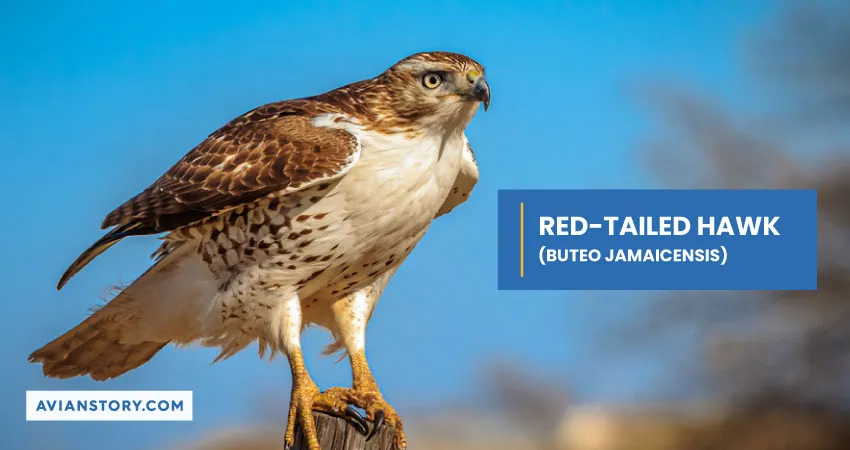
In South Dakota, the most frequently spotted hawk is the Red-tailed hawk. You can spot one of them pretty much everywhere. However, your chances of stumbling upon one will increase when you are around open country, plains, and woodlands.
Attributes
Red-tailed hawks are known to have rick brown upper parts and pale underparts. The bellies tend to be streaked. But the unique thing about these hawks is the tail, which is red in color, as you can guess by the name.
However, the cinnamon-red might not be that noticeable in immature birds. Those usually have brown-colored tails.
Diet
These raptors mainly feast on small mammals. They circle around open fields, searching for voles, rabbits, mice, rats, and squirrels. However, you can definitely spot them eating reptiles and other birds.
Nesting Preference and Eggs
Nests of Red-tailed hawks are generally found in cliff ledges and on top of tall trees. But you can spot some on top of tall buildings and other high manmade structures. Females can lay t 1 to 4 whitish with brown spottings eggs.
Northern Harrier (Circus cyaneus)
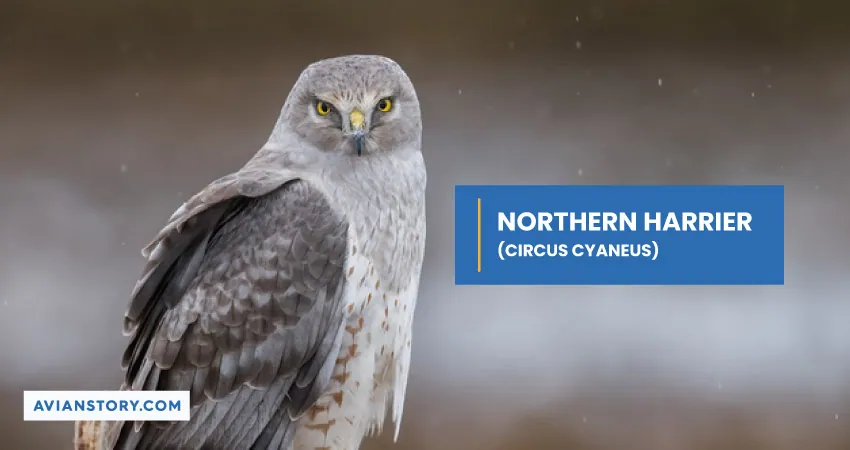
The second most common hawk that can be spotted flying the skies of South Dakota is the Northern Harrier. You will not have that much trouble catching a glimpse of these hawks in the summer seasons. They can also be spotted during spring and fall migration from March to May and September to November.
Attributes
Male Northern Harriers are known to have gray upper parts and white underparts. They also have a white rump patch. Females, on the other hand, tend to sway more in the brown coloration spectrum.
Other than that, the Northern Harries have slender bodies. The size is somewhere between a goose and a crow. They have long and broad wings. And when they fly, the tips of their wings are generally higher than their bodies, which makes them get a V-shape while flying.
Diet
The diet of Northern Harriers mainly consists of small birds and small mammals. However, you can definitely find them munching on large-sized prey.
Nesting Preference and Eggs
These hawks like to nest on the ground. However, they do not just nest out in the open. Instead, they choose the ground with dense vegetation, such as bush tails, willows, and reeds. And in the breeding season, these raptors can lay 4 to 9 eggs, which start as pale blue and then turn pale in color.
Rough-legged Hawk (Buteo lagopus)
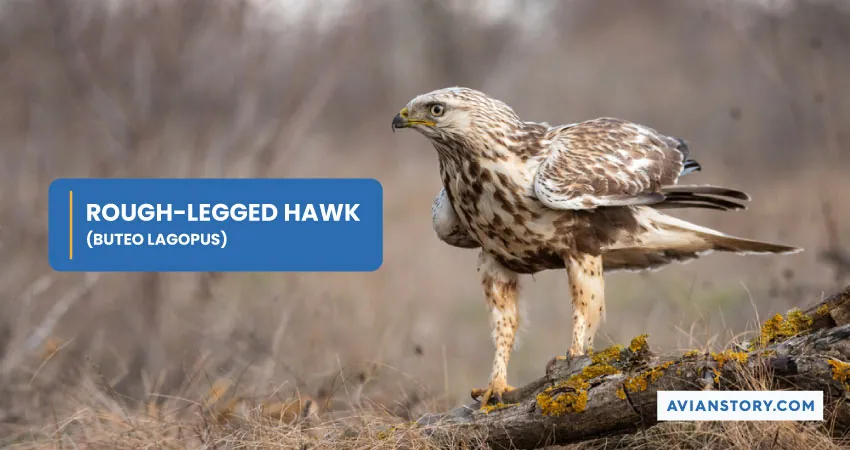
Another common type of hawk that you can spot in South Dakota is the Rough-legged hawk. You will have the chance to catch them flying in the state’s skies from November to March. And in the summer seasons, they fly back to the breeding grounds, which are in the Arctic.
Attributes
Rough-legged hawks are predominantly dark-brown in color. However, they do occur in light forms. At the bend of their wings, most have dark patches. The same thing is noticeable across their bellies and the end of their tails. They are also known for having broad and long wings.
But the unique trait of these hawks is the legs. They have feather-covered legs, which is why they get “Rough-legged” as their name. These feathers help them to stay warm in the Arctic regions.
Diet
Their diet mostly has voles and lemmings, which are pretty much a common food source for cold-weather birds of prey. However, in South Dakota, they mostly feast on small mammals, such as mice, rabbits, and ground squirrels.
Nesting Preference and Eggs
The nests of these hawks can be found on the high cliff ledge. You can also find their homes in uplands, boreal forests, treeless tundra, and alpine regions. And in breeding seasons, you will find 3 to 5 bluish-white eggs inside.
Cooper’s Hawk (Accipiter Cooperii)
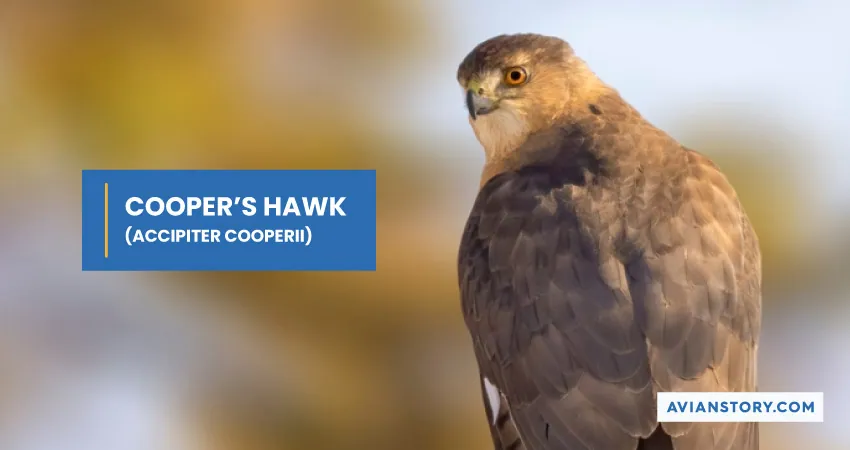
You will be more likely to spot Cooper’s hawks during the summer in South Dakota. They are more common from April to September. After summer, they fly back to the south.
Attributes
Among all the traits of Cooper’s hawks, the most distinct one is the size of their heads. Their heads are comparatively larger than their bodies. Also, their heads lean more on the flatter side. But that does not mean that their bodies are small. In fact, they fall in between a goose and a crow.
In terms of coloration, their tails have dark bands. The chest of these hawks is red-orange in color, and they have blue-gray back.
Diet
Cooper’s hawks mostly feed on small-sized animals and birds. In terms of animals, they mostly feast on mice, bats, chipmunks, and ground squirrels. And when it comes to birds, their favorites are those found around bird feeders. However, they will eat insects and reptiles when they are desperate for food.
Nesting Preference and Eggs
These hawks are known for reusing old nests of other large birds. They prefer tall trees when it comes to finding the right spot to nest. Also, Females can lay 3 to 5 bluish-white eggs.
Swainson’s Hawk (Buteo swainsoni)

These birds of prey arrive in South Dakota in April. They spend the summer breeding and taking care of their younglings in the state. And at the beginning of September or at the end of August, they start to migrate from South Dakota.
Attributes
The appearance of these hawks varies from one to another. But most tend to have light bellies and reddish-brown or dark breasts. Most are also seen having gray or brown upper parts.
A majority of the males of this species have gray-colored heads. Females, on the contrary, are topped with brown feathers. Both sexes have white linings on the underwing part. This distinct color contrasts strongly with the flight feathers, which are mostly black.
Diet
Swainson’s hawks mostly live off rabbits, reptiles, and rodents. They tend to switch up their diet when it is not time to breed. When they switch, they will mainly feed on insects. One of the noteworthy mentions, in this case, is grasshoppers, which they rely on the most to get their proteins.
Nesting Preference and Eggs
These birds of prey do not generally nest in the open country. Instead, they prefer tall trees near low mesquite bushes or fields. However, you can definitely spot their homes on top of utility and power poles. When building their nests, these birds prefer to gather grasses and twigs.
If you are lucky enough, you can spot 2 to 4 white eggs inside when you come across their nests.
Sharp-shinned Hawk (Accipiter striatus)
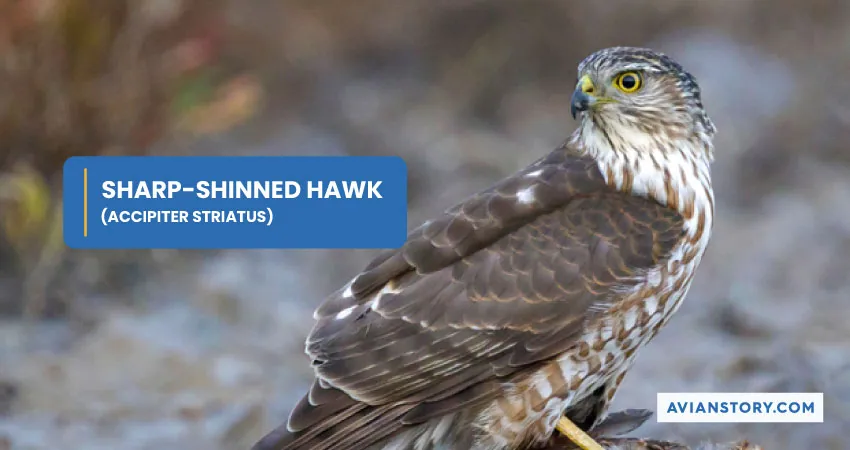
The smallest hawk you can find in South Dakota is the Sharp-shinned hawk. And in most cases, you will find them in Winter, which is from September to April. When their breeding season starts, they fly back to the north.
Attributes
These hawks have a standout feature: the bars found on the upper part of their chest. These bars fade towards their wings and the back of their bellies. Another way to identify these birds would be to see them flying.
During the flight, you will notice that their wings are reasonably short and have a rounder nature. It should also be noted that female Sharp-shinned hawks tend to be larger than males.
Diet
Sharp-shinned hawks hunt in open areas, where they go after small birds, large-sized insects, rodents, and amphibians. You can also find them being around bird feeders, where they feast on songbirds.
Nesting Preference and Eggs
The nests of Sharp-shinned hawks are often found in conifer trees. They choose trees with dense covers. And their preferred spot is at the top point. In terms of clutch size, these raptors lay 4 to 5 blue-white eggs.
Ferruginous Hawk (Buteo regalis)
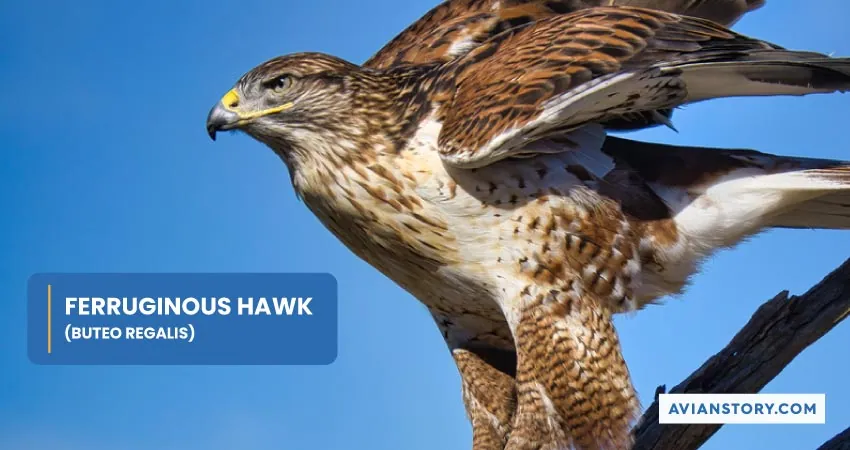
You will need to be extremely lucky to catch a glimpse of these hawks in South Dakota. They are pretty rare in this state. However, you will have a higher chance of spotting them from September to March.
Attributes
Ferruginous hawks are considered to be the largest hawks in North America. They usually have large-sized heads and wings, and they have both dark and light morphs. But identifying them can be pretty tricky as their color pattern varies greatly.
The most common version of light morph Ferruginous raptors is white. Those birds will have white coloration in the belly, head, and parts underneath their wings.
That said, their standout feature is the rusty brown coloration on the upper side of their wings and backs. Most of them are also known to have darker legs, which you should note while trying to spot them.
Diet
The diet of these raptors is reasonably limited. They are usually found relying on small mammals, which include jackrabbits, cottontail rabbits, prairie dogs, and ground squirrels. However, generally, it depends on what is available in the area they are residing in.
Nest Preference
Nests of Ferruginous hawks are reasonably large in size. Most measure around 3 feet in width and 3 feet in depth. When it is breeding season, these nests can be populated with eggs. They are known to lay 1 to 8 bluish-white eggs.
Broad-winged Hawk (Buteo platypterus)
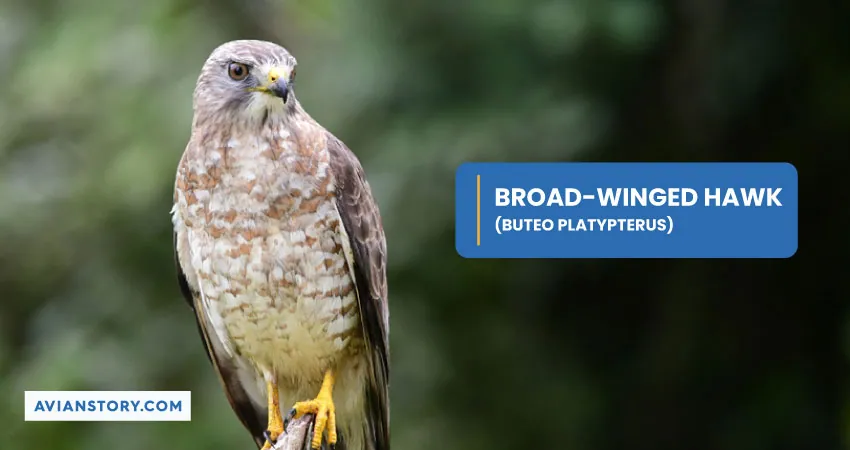
Another rare species of hawk you can come across is a Broad-winged hawk. They are usually sighted from April to October in South Dakota.
Attributes
Broad-winged hawks are commonly known for having small and stout bodies. However, they have comparatively large-sized heads, which have reddish-brown feathers. They also tend to have short and squared tails.
When it comes to size, these are pretty close to crows. Another identification factor you need to consider is that their tails mostly have broad white and black streaks.
Diet
These raptors hardly fly when they are hunting. Their preferred place to hunt is near woods and water bodies. And when they are hunting, they are primarily after small mammals, young turtles, frogs, and snakes.
Nesting Preference and Eggs
Broad-winged hawks tend to nest on the lower parts of large-sized trees. They tend to choose the trees around water bodies, where they hunt for their food. Nonetheless, the clutch size of these hawks is 1 to 5 eggs and their eggs are whitish with brown spots on the surface.
Northern Goshawk (Accipiter gentilis)
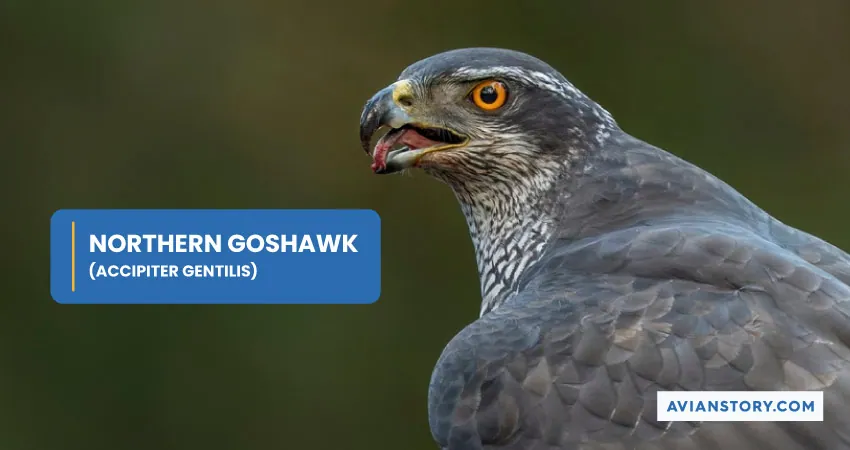
There have been a couple of sightings of Northern Goshawk in South Dakota. However, they are not as common as other hawks that are present in the state.
Attributes
The size of Northern Goshawks is what sets them apart from other hawks. They are larger than most of the other species. These birds of prey are larger than Cooper’s and sharp-shinned hawks. And those two raptors are pretty large, to begin with.
Apart from their large size, they are also identified as having grey feathers, broad wings, and long tails. But if you really want to spot one of these hawks, you have to look for their yellow eyes. They are known to have a white stripe over their eyes.
Diet
Northern Goshawks have a diverse diet. They can quickly adapt to the food sources that are available near them. In general, they feed on insects, reptiles, mammals, and other birds.
Nesting Preference
You will mostly find their nests in mixed or coniferous forests. However, finding a nest of these hawks is not an easy task. They are very secretive and can be very aggressive when you come close to their homes. But if you are lucky enough to see one in the breeding season, you can find 2 to 4 eggs inside.
Red-shouldered Hawk (Buteo lineatus)
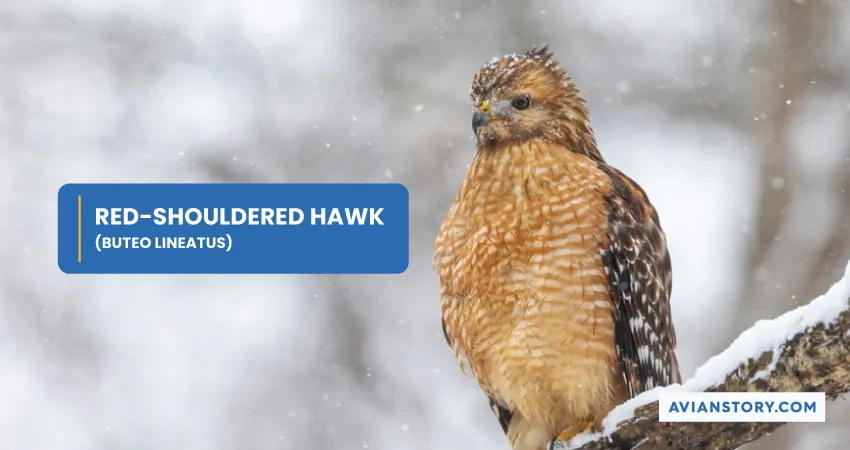
These small hawks are considered to be accidental species in South Dakota. In other words, they are extremely rare. But if you visit Sioux Falls before the winter starts, you might have a chance of spotting one of them.
Attributes
Red-shouldered hawks have a distinct marking on their bodies. They have white and dark checkered wings and reddish chest barring. This distinctive marking makes them easy to identify.
Most of these hawks are medium in size, but they are considered to be reasonably smaller than other hawks. Other than their appearance, their screams can make it easier for you to spot them. They tend to make a loud and highly noticeable cack-cack sound.
Diet
Small mammals, snakes, and frogs primarily make up for the diet of the Red-shouldered hawks. But they mostly rely on frogs and snakes, which is why you can find them being around water bodies.
Nesting Preference and Eggs
The clutch size of the Red-shouldered hawks is 3 to 4 eggs. Their eggs tend to be bluish to white in color. And in terms of nesting sites, they prefer trees near a water body.
| Name | Length | Weight | Wingspan | Commonly Found In | Behavior | Fun Fact |
| Red-tailed Hawk | 17.7 to 25.6 inches | 1.52 to 3.22 pounds | 44.9 to 52.4 inches | Open fields and perched on top of telephone and utility poles. | Territorial | Red-tailed hawks have very sharp eyesight, which is eight times better than humans. |
| Northern Harrier | 16.14 to 19.68 inches | 0.69 to 1.69 pounds | 41 to 46 inches | Open areas, such as marshes and fields. | Mostly solitary | Northern harriers are well-known for having an amazing sense of hearing. |
| Rough-legged Hawk | 18.5 to 20.5 inches | 1.58 to 3.09 pounds | 52.0 to 54.3 inches | Mostly in high points, such as cliffs of low-lying boreal forests. | Territorial | These hawks can fly exceptionally fast. Some can reach speeds between 22 mph and 28 mph. |
| Cooper’s Hawk | 14.6 to 17.7 inches | 0.49 to 1.5 pounds | 24.4 to 35.4 inches | Edge of the forests and near bird feeders of backyards. | Territorial and aggressive | The long-sized tail of Cooper’s hawks acts like a rudder. It enables them to maneuver easily in wooden regions. |
| Swainson’s Hawk | 18.9 to 22.1 inches | 1.53 to 3.01 pounds | 46 to 54 inches | Great plains during the summer and in pen country in other periods. | In the breeding season, they tend to be highly territorial | Swainson’s hawks are named after William Swainson, a British naturalist. |
| Sharp-Shinned Hawk | 9.4 to 13.4 inches | 0.19 to 0.48 pounds | 16.9 to 22.1 inches | Mostly common in forest areas. | Becomes territorial when breeding, but they are mainly solitary. | These haws get their name for having thin and exposed lower legs. |
| Ferruginous Hawk | 20 to 25 inches | 2 to 5 pounds | 52 to 56 inches | Mainly in open areas and open fields. | Solitary | Ferruginous means rust-colored, which refers to the reddish color of these hawks. |
| Broad-winged Hawk | 13.4 to 17.3 inches | 0.58 to 1.24 pounds | 31.9 to 39.4 inches | Deciduous or mixed coniferous-deciduous forest canopies | Stays solitary when migrating, but they are usually territorial. | It is estimated that the Broad-winged hawks travel 4 thousand miles in total when they are migrating. |
| Northern Goshawk Hawks | 20.9 to 25.2 inches | 1.40 to 3.01 pounds | 40.5 to 46.1 inches | Suburbs and backyards with bird feeders. | Highly territorial | The old English word “goose hawk” is where the species gets the “Goshawk” name. |
| Red-shouldered Hawk | 16.9 to 24.0 inches | 1.07 to 1.71 pounds | 37.0 to 43.7 inches | Mostly near wet forests. | Solitary and very territorial |
Conclusion
Among all the hawks in South Dakota, you have a better chance of coming across Red-tailed, Rough-legged, and Norther Harrier hawks. Although the others can be spotted in different parts of South Dakota, the one that is harder to spot is the Red-shouldered hawk. It is considered to be accidental species for the state.
Hawks Found in Nearby States of South Dakota:
Resources:
- https://www.allaboutbirds.org/news/bird-cams-faq-red-tailed-hawk-nest
- https://portal.ct.gov/DEEP/Wildlife/Fact-Sheets/Northern-Harrier
- https://www.audubon.org/field-guide/bird/rough-legged-hawk
- https://www.hawkmountain.org/raptors/coopers-hawk
- https://www.audubon.org/field-guide/bird/sharp-shinned-hawk
- https://www.peregrinefund.org/explore-raptors-species/hawks/ferruginous-hawk
